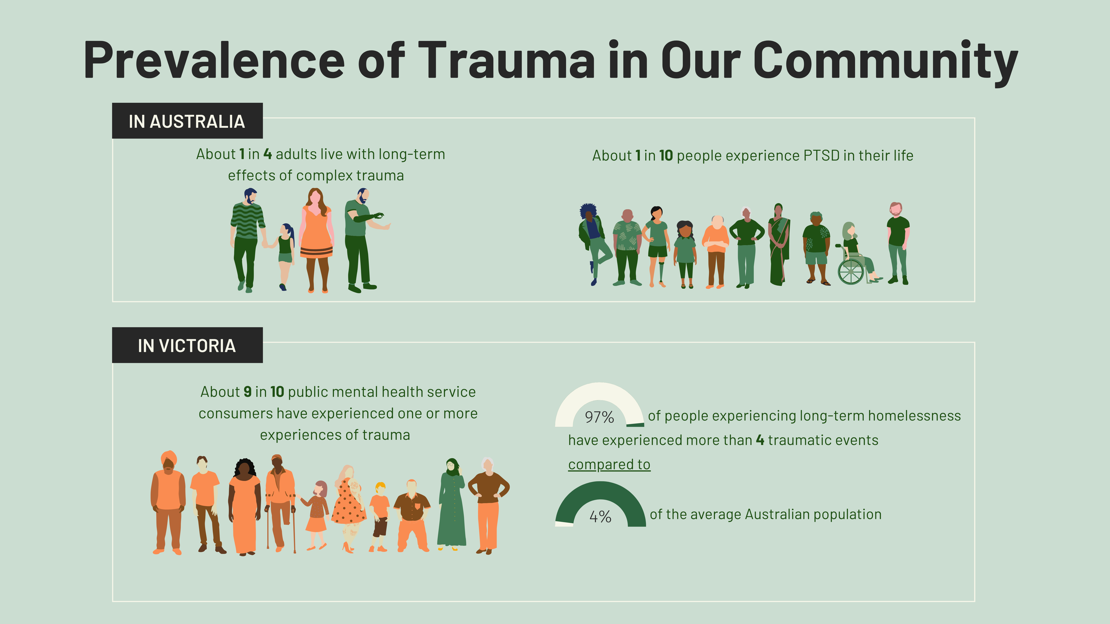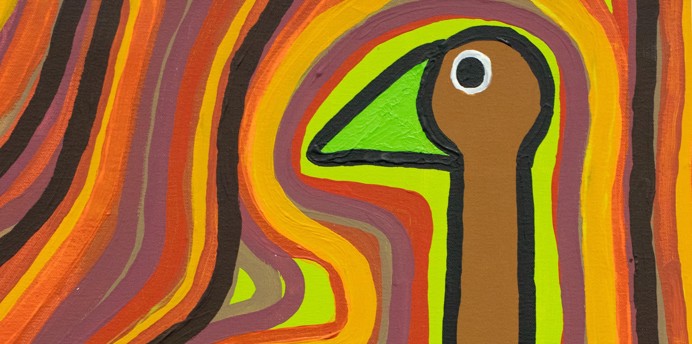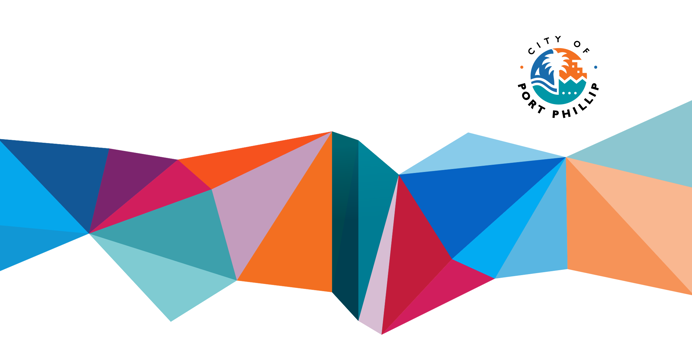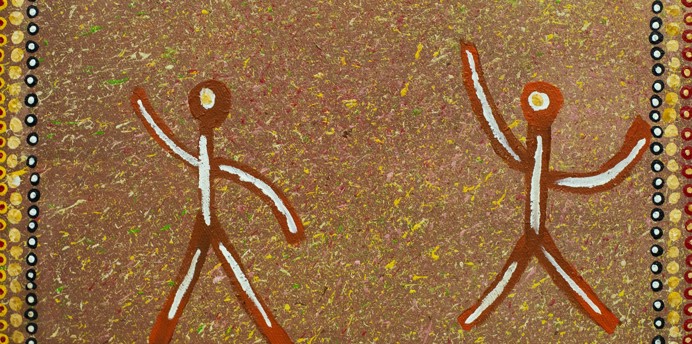Understanding trauma
Understanding trauma
Trauma occurs when an event, or series of events, overwhelms the way we process difficult emotions or situations. Being overwhelmed can make it hard for us to manage our emotions, thoughts, and behaviours. This can significantly change our internal world, the relationships around us, and the way we interact with our community.

Mural by Juzpop (Justine Millsom). Photo by Yoshi Yanagita.
Effects of trauma in our community could look like alcohol and substance use, increased violence in our community, distrust of authority, distrust of systems and services, changes in our community relationships, distrust and disengagement within our community, community members being shamed or pushed out of our community, and more.
By learning about trauma and becoming trauma-aware, we can also learn paths about to recovery and help our community to be more engaged.
The 3 E’s of trauma
Prevalence of trauma
Around 75% of Australians have experienced at least one traumatic event in their lifetime.
Types and rates of trauma vary across demographics. For example, women and girls are more likely to experience trauma that is intentional (victimisation trauma), than men.
Among populations considered vulnerable, rates of trauma tend to be higher than average. For example, in Victoria around 97% of people experiencing long-term homeless have experienced more than 4 potentially traumatic events compared to 4% of the Australian population.
In Australia:
- About 1 in 4 adults live with long-term effects of complex trauma
- About 1 in 10 people experience PTSD in their life
- More women than men experience victimisation trauma
- Twice as many women as men experience PTSD
In Victoria:
- 9 in 10 public mental health service consumers have experienced trauma
People experiencing long-term homeless in Victoria:
- 97% have experienced more than 4 potentially traumatic events (compared to 4% of the Australian population)
- 100% have experienced a potentially traumatic event
- 98% have experienced accidental trauma (e.g., violence, accident, disaster) -
- 60% have experienced victimisation trauma (prolonged abuse, usually in childhood)

Understanding adverse childhood experiences
Adverse childhood experiences, sometimes called ACEs, are stressful or harmful events that happen when we are young. These events can happen directly to us or around us.
10 areas where adverse childhood experiences could occur:
Childhood Trauma and the Brain | UK Trauma Council
- Physical abuse
- Emotional abuse
- Sexual abuse
- Neglect
- Family violence
- Drugs and/or alcohol abuse
- Mental health issues in the family
- Loss of a parent due to separation or divorce
- Loss due to a death
- Family member in incarceration (prison).
Prevalence of adverse childhood experiences
At least 72% of Australians have experienced one adverse childhood experience.
In populations considered vulnerable rates of adverse childhood experiences tend to be higher than average.
Childhood maltreatment includes physical abuse, sexual abuse, emotional abuse, neglect, or exposure to family violence.
Childhood maltreatment among Australians over 16 in 2023:
- 39.6% exposure to family violence in childhood
- 30.9% emotional abuse
- 32% physical
- 28.5% sexual abuse
- 40.2% more than one type of abuse in childhood
- 37.3% of women had experienced sexual abuse as children, twice as many as men.
Among people specifically aged 16-24 surveyed in 2023, rates of childhood maltreatment were higher than the Australian averages stated above. This includes sexual abuse, emotional abuse, neglect, and exposure to family violence. Physical abuse was the only childhood maltreatment that was lower than the average.
Types of trauma
There are many types of trauma. They are categorised depending on the nature, duration, scale and timing of the event. Within the same type, effects and their duration varies as much as people do.
How trauma affects our behaviour across age groups
Possible effects, coping adaptations and signs of trauma can look different across age groups.
| Age group | Possible signs |
| Early childhood (0-6 years) | Possible signs include clinginess, nightmares, re-enacting trauma in play, skills regression, learning and skills beyond what is expected for their age group. |
| Childhood (6-12 years) | Possible signs include difficulty learning and paying attention, being overly aggressive and oppositional, learning ability and skill development beyond what is expected for their age group. |
| Adolescence (13-17 years) | Possible signs include aggression, increased risky behaviour and mood swings, difficulty with authority, difficulty making and maintaining relationships, difficulty at school, persistently being on alert. |
| Adults (18-64years) | Possible signs include persistent or recurring disorders such as anxiety and depression, social withdrawal, difficulty making and maintaining relationships, difficulty at work, increased alcohol and/or drug use particularly to manage stress. |
| Older persons (65+) | Possible signs include traumatic memories coming back, disorders continuing, PTSD signs, increasing signs due to age-related stress. Adaptations can be misdiagnosed as dementia or aging. |





